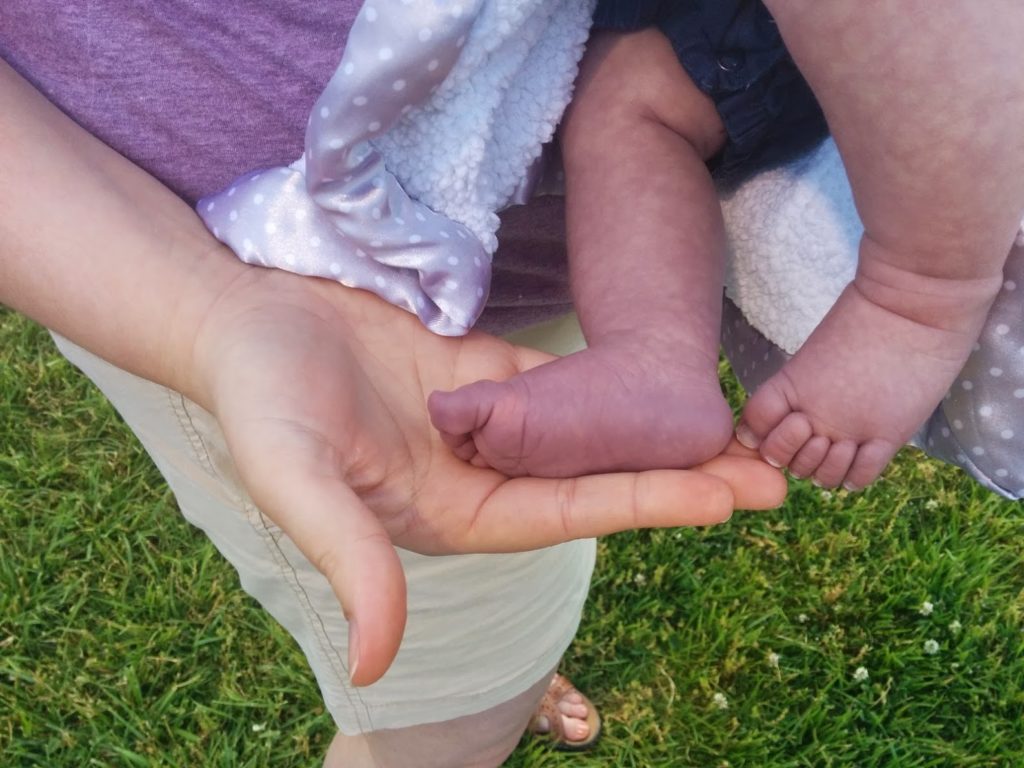This post is written and originally posted on Heart Savvy Momma. Heart Savvy Momma was created by Erica Thayer, co-founder of Project Heart.
Are you checking your child’s pulse ox at home? Whether your doctor has recommended spot checks or you are just curious for your own knowledge, here’s a little info to help you be the savvy momma I know you are, even when it comes to oxygen saturations.

Some babies with certain types of CHD will have lower than normal oxygen levels. These CHDs are often called cyonotic heart defects. The lower oxygen levels cause the skin to sometimes appear bluish, especially around the eyes, mouth, and nail beds. You may have heard the term “blue babies” in reference to Tetralogy of Fallot (ToF), this is what they are talking about. In addition to ToF, babies with single ventricle heart defects or Transposition of the Great Arteries may also appear blue or “dusky” before surgery is performed to increase oxygen levels in the body.
Normal oxygen saturations (or sats for short) are typically between 94-100. If your child’s sats consistently fall below 90 your doctor may recommend that you monitor at home. Or you may just be curious (re:anxious, if you are anything like me!) about what your child’s O2 sats are day to day. Your doctor may write a prescription for a medical company to provide you with a professional pulse ox or you can buy a simple one on Amazon that will do just about the same job. Here is the one I recommend. Just know that until your child is about 18 months – 2 years old their fingers might not be long enough to reach the sensor (and they are SO wiggly it might not give you an accurate reading). In that case, you would need a professional grade monitor to truly get an accurate reading.
In rare cases, children will require continuous monitoring at home or monitoring all through the night. If your child’s doctor has not specifically requested you do this then what you will be doing are spot checks. Do not continuously monitor your child unless you are required to – you will both go crazy! Trust me on this one. Oxygen levels fluctuate and home pulse ox monitors may lose connection or momentarily read incorrectly.
If you do have to continuously monitor at home you will likely receive additional info from your child’s care team . For everyone else, ask your child’s doctor how long and how often to use your pulse ox. Typically 1-2 times per day and more as needed when noticing symptoms (increased blueness, fast breathing, when sick, etc) is the max any doctor will recommend, with the exception of special circumstances. Usually checking for 1-2 minutes at a time will give you a good snapshot of how your child is doing.
Ok, so how do you know if the reading you are getting on your home pulse ox is accurate? Here’s 4 quick things to consider:

As a short bonus, here’s a reference guide for the Innovo pulse ox monitor I recommend. Every monitor is a little different so make sure you are familiar with which numbers mean what on your device. No need to panic over low sats if what you are actually looking at is the heart rate!
The “pleth” that I mentioned above is depicted as the waveform on this one. And check out that little Perfusion Index number, I love having that little extra info to help me know I’m getting a good reading.